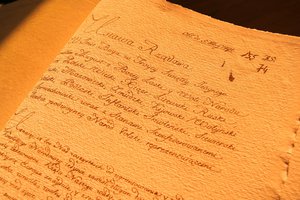Polish language
Polish is the official language of Poland. It belongs to the family of Indo-European languages, and the group of West Slavic languages (alongside Czech, Slovak, Kashubian, Lower Sorbian, Upper Sorbian and the now defunct Polabian language). It is believed to be one of the most difficult languages in the world.
It is estimated that an average Pole has an active vocabulary of approximately 30,000 words, and a passive vocabulary of around 100,000 words which he or she does not use. According to the philologists from the University of Bialystok, it is enough to know the 1200 most frequently used words to communicate in Polish.
The Polish alphabet is based on the Latin alphabet and consists of 32 letters. It includes seven digraphs (sz, rz, cz, ch, dz, dż, dź), one trigraph (dzi) and nine letters formed using diacritics (ą, ć, ę, ł, ń, ó, ś, ź, ż).
There are seven grammatical cases and types of coniugation. Cases apply to nouns, adjectives, and participles in the function of modifiers, pronouns substituting nouns, adjectives and numerals, as well as numerals.
The oldest sentence in the Polish language: ‘Day, ut ia pobrusa, a ti poziwai’ was written in 1270 in Wrocław, in the Book of Henryków. Fifteen years later, at the gathering in Łęczyca, it was decided that the Polish language will be used next to Latin in cloister and cathedral schools.
The Polish language has been influenced by Latin, Greek, German, Czech, Ruthenian, Turkish, French, Italian, Russian, Hungarian and Yiddish. Currently, it is most influenced by the lingua franca of our times – the English language.
The main dialects of the Polish language include: Greater Polish, Lesser Polish, Silesian, Masovian, Chełm-Kociewie-Warmian and North- and South-Eastern Borderlands’ dialects.
KK
03.09.2014






